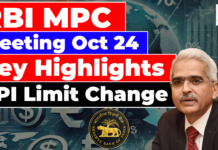India’s foreign exchange reserves recently surpassed $700 billion, solidifying its position as the fourth-largest holder of such reserves globally, following China, Japan, and Switzerland
The Reserve Bank of India’s (RBI) purchase of $4.8 billion and valuation gains of $7.8 billion last week fueled the increase in foreign exchange reserves.
This significant achievement underscores India’s growing economic strength and stability.
What Are Forex Reserves?
- Foreign exchange reserves, commonly known as forex reserves, are assets held by a central bank in foreign currencies.
- These reserves include foreign currencies, gold, and special drawing rights (SDRs) from the International Monetary Fund (IMF).
- They are crucial for a country’s economic health as they provide a buffer against economic shocks and help maintain confidence in the financial markets.
The Significance of Crossing $700 Billion?
- This increase was driven by foreign inflows into India’s stocks and bonds, as well as valuation gains from a weaker dollar and rising gold prices.
- The increase in foreign exchange reserves has been supported by a positive balance of payments and a narrower current-account deficit, indicating a stronger economic position.
- The Reserve Bank of India utilizes its substantial foreign exchange reserves to stabilize the Indian rupee, particularly during periods of market volatility.
- Bank of America has projected that India’s foreign exchange reserves could potentially increase to $745 billion by March 2026
How RBI Uses Forex Reserves to Stabilize the Rupee?
The RBI buys or sells foreign currencies to influence the exchange rate. When the rupee depreciates significantly, the RBI can sell dollars from its reserves to increase the supply of dollars in the market, thereby stabilizing the rupee. Conversely, if the rupee appreciates too much, the RBI buys dollars to prevent it from becoming overly strong, which could hurt export competitiveness
How RBI Uses Forex Reserves to Stabilize the Market?
- Maintaining Investor Confidence: A substantial forex reserve acts as a confidence booster for foreign investors. It signals that the country has enough reserves to manage its external obligations and mitigate any potential economic crises.
- Reducing Volatility: By intervening in the forex market, the RBI can reduce excessive volatility in the exchange rate. This helps in maintaining a stable economic environment, which is crucial for trade and investment.
- Supporting Monetary Policy: The RBI can use its reserves to support its monetary policy objectives. For instance, by managing the exchange rate, the RBI can influence inflation and interest rates, which are critical for economic stability.
Conclusion
Crossing the $700 billion mark in forex reserves is a testament to India’s robust economic policies and resilience. The RBI’s strategic use of these reserves not only stabilizes the rupee but also ensures a stable economic environment, fostering growth and investor confidence. As global economic uncertainties persist, maintaining a strong forex reserve will continue to be a cornerstone of India’s economic strategy.
FAQs
1. Why is this milestone important?
- It shows India’s economic strength and stability.
2. What caused the increase?
- RBI purchases, favorable valuations, and foreign inflows.
3. How does it benefit India?
- It provides a buffer against shocks, attracts investors, and strengthens the economy.
4. Are there any risks?
- Excessive reserves can strengthen the currency, hurting exports.
5. What’s the outlook?
- Positive, but global factors can influence it.








